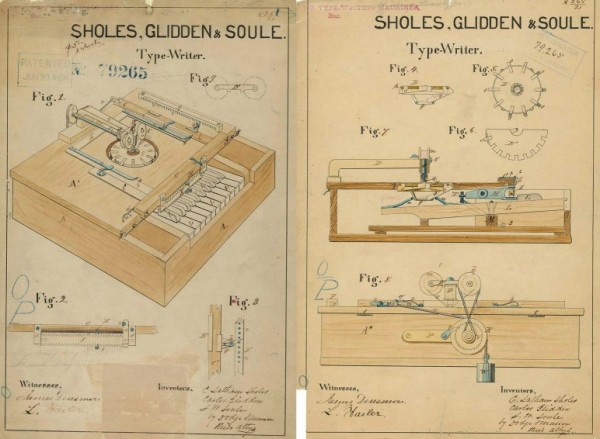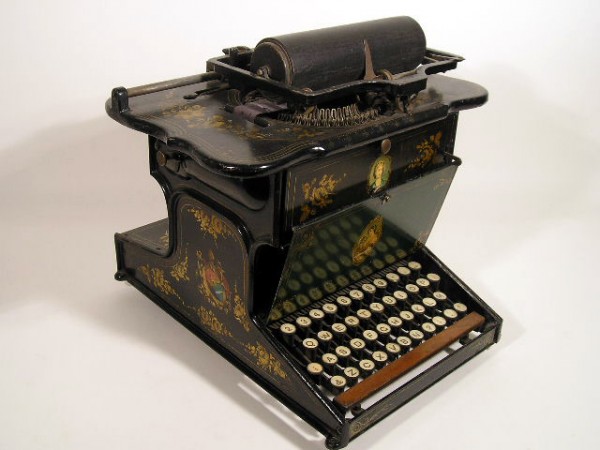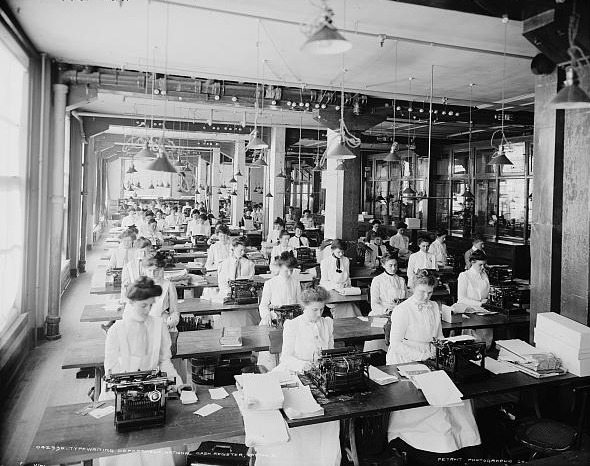Patents: The Typewriter
Do you remember the days of using a typewriter? After the introduction of the first commercially successful typewriter, the mechanical marvel quickly became an indispensable tool, transforming the way the world communicated in both business and the home.
1868 patent drawing for Shole’s typewriter / National Archives (click to view patent)
Although various forms of the typewriter had been around for many years, the first practical and commercially successful typewriter was invented by Christopher Latham Sholes, a newspaper publisher and politician. On June 23, 1868, Sholes and his partners, Carlos S. Glidden and Samuel W. Soule, were granted a patent for their “Type-Writer” machine. The initial design was described as “a cross between a piano and a kitchen table.”
Sholes & Glidden typewriter 1874
After receiving the patent, Sholes continued to refine the design and invented the QWERTY keyboard to prevent the keys from jamming and improve typing speed. The QWERTY layout, with some modifications, is still used today on modern keyboards. Because the keys struck upwards, the typist could not see the characters as they were typed. E. Remington and Sons, then famous for manufacturing sewing machines, acquired the patents for the Sholes & Glidden Type-Writer and mass produced the machines for commercial use.
Typewriting department, National Cash Register, c.1902 / Library of Congress
Although the general public was initially skeptical of the typewriter, industrialization during the late 19th century produced a business environment well suited for the device. The typewriter helped to increase productivity by allowing an operator to type substantially faster than writing by hand. The typewriter is also credited with bringing more women into the workplace. By the turn of the century, an influx of women entered the clerical workforce as typists in offices.
For decades, typewriters were an integral part of business and personal correspondence. Although no longer in use today, there’s no denying its significant impact on the world.
Do you have typists in your family tree? Or do you perhaps still have your old typewriter around the house?










 Genealogy Discussions
Genealogy Discussions Genealogy Projects
Genealogy Projects Popular Genealogy Profiles
Popular Genealogy Profiles Surnames
Surnames The Geni Blog
The Geni Blog The World Family Tree
The World Family Tree